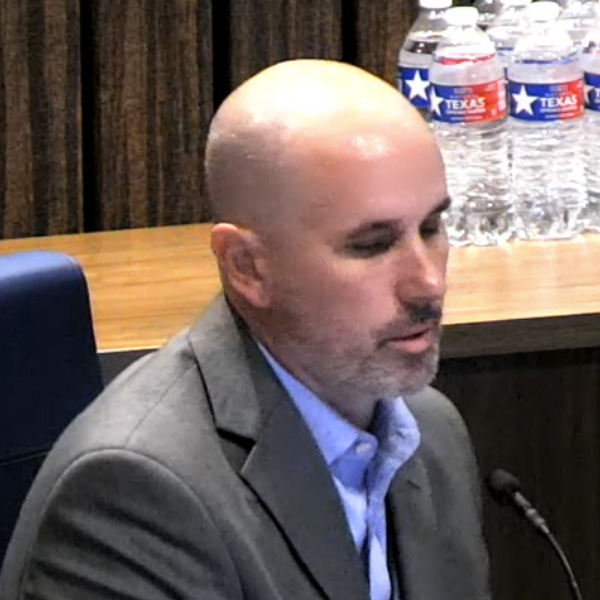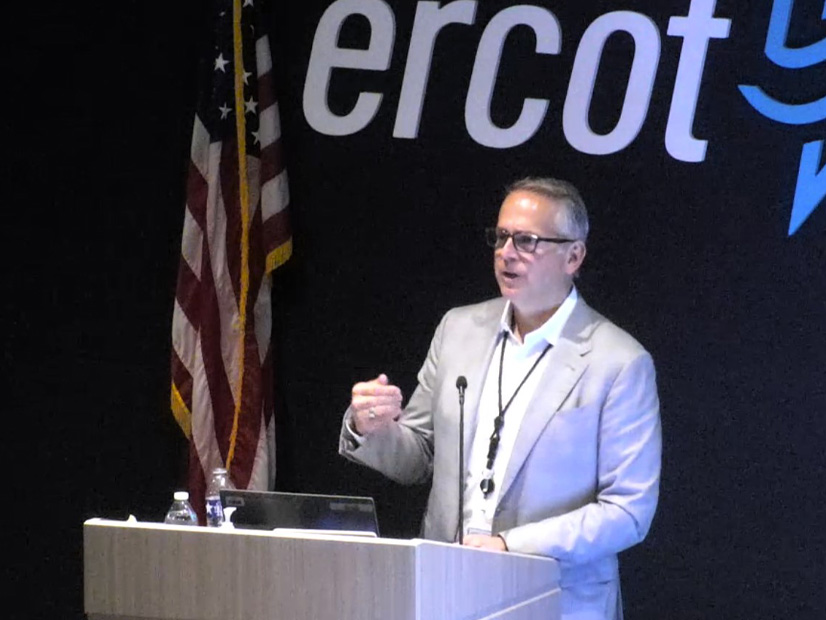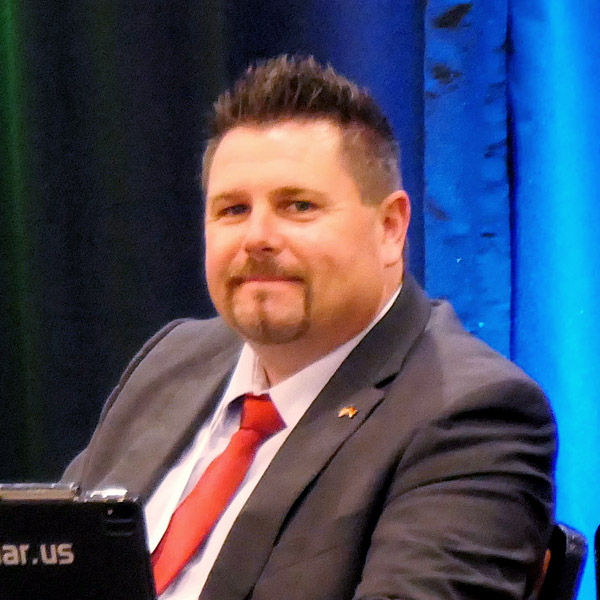VALLEY FORGE, Pa. — The PJM Markets and Reliability Committee voted to eliminate energy efficiency from the capacity construct, adopting a proposal from the Independent Market Monitor during its Aug. 21 meeting. (See Stakeholders Endorse PJM EE Measurement and Verification Proposal.)
The proposal would eliminate all references to EE from the governing documents and manuals, excising EE from the market rules. It was endorsed with 70.9% sector-weighted support.
Stakeholders rejected three proposals, including a Market Implementation Committee endorsed package that would tighten the measurement and verification (M&V) process and require a causal link between capacity market revenues and the viability of an EE project. Two alternatives offered by Exelon and the New Jersey and Illinois consumer advocates also were voted down.
The Monitor’s proposal was offered as an alternative by Paul Sotkiewicz, president of E-cubed Policy Associates, representing J-Power USA. During the Aug. 7 MIC meeting, he stated that permitting energy efficiency to continue offering into capacity auctions runs afoul of the Reliability Assurance Agreement (RAA), which permits its participation only as long as EE is not captured in the load forecast. He argued that EE participation effectively asks states without their own programs to subsidize EE programs offered by other states. During the MIC meeting, PJM’s Tim Horger stated the RTO could support the Monitor’s proposal as well as its own.
Monitor Joe Bowring said the proposal simply would remove governing document and manual references to EE, reflecting that PJM has recognized EE is included in the peak load forecast since 2017 and EE is not a capacity resource under the tariff as a result.
“Rather than being a capacity resource, it is fact that under the existing rules EE is a subsidy paid for by customers and has cost customers half a billion dollars to date. It is not PJM’s role to decide to subsidize EE as a matter of policy,” Bowring said.
The Monitor has filed two complaints with FERC arguing that PJM’s EE rules are in violation of its tariff and against several EE providers it contends have not met the capacity market participation requirements. Bowring said if the Monitor’s M&V proposal is filed and accepted by FERC, he would drop his complaint against PJM. However, the complaint against private EE providers will stand. (See Monitor Alleges EE Resources Ineligible to Participate in PJM Capacity Market.)
Ahead of the same-day Members Committee endorsement vote on the Monitor proposal, CPower’s Ken Schisler called on stakeholders to approach the outright elimination of a resource class to be done in a cautious and deliberative manner. He objected to substituting the rejected MIC package with the Monitor’s proposal on the MC agenda and questioned whether there was an adequate quorum for the vote as discussion stretched past the normal workday.
A motion made by Sotkiewicz to suspend the rules and add the Monitor’s proposal to the agenda received 67.8% sector-weighted support. He argued the consideration given to the procedural objections ran contrary to precedent in the stakeholder process.
Schisler said such a significant vote should not be made under such circumstances and without corresponding revisions to the governing documents being available. After his comments, PJM presented redlines drafted during the meeting that removed sections detailing how EE functions in the capacity market.
“This is a very serious decision. We don’t even have redlines before us and we’re doing it under a suspension of rules,” Schisler said.
The strongest support for the proposal at the MC came from the electric distributor and generation owner sectors, with 88.9% and 86.7% support, respectively. Three-quarters of transmission owners supported the changes, as did two-thirds of other suppliers. Only end-use customers were in opposition, with 16.7% support coming from the Indiana and Kentucky consumer advocates.
PJM Proposal Would Tighten M&V Rules
The MIC-endorsed proposal, which was sponsored by PJM, would have required contracts with end-use consumers demonstrating the EE provider holds the capacity rights to energy savings associated with a project, removed EE from the Capacity Performance construct and required a causal link showing a project was conducted exclusively because of capacity market revenues.
Schisler said he agrees with PJM that EE providers should own the exclusive capacity rights to any savings they offer into the market — a requirement he said already exists in the status quo rules. Instead, he argued the proposal is driven by an ideological goal of eliminating EE as a resource class. He said no EE resources would be able to meet the new requirements.
On the causal requirement, Schisler compared EE participation in capacity markets to the wholesale blood market that allows a needed supply to move between hospitals. The reasons individuals donate don’t necessarily line up with market revenues and there is no requirement it be demonstrated a donation was made to receive wholesale revenues to be paid.
He also pushed back against a component of PJM’s proposal that would curtail the period an EE project could be offered as capacity from four years to one, which he said would concentrate collateralization, auditing and M&V costs on a single year and further degrade the viability of EE programs.
PJM’s Pete Langbein responded that PJM’s focus is on identifying the benefit consumers receive when paying for EE resources and ensuring that value is being realized.
“I don’t think that’s an ideology thing. I think that’s just a principle we should agree on,” he said.
Langbein justified the shortened eligibility period by stating there could be a one-year lag in energy savings resulting in a corresponding decline in capacity costs, after which he said consumers participating in an EE program would be benefiting twice.
Greg Poulos, executive director of the Consumer Advocates of the PJM States (CAPS), said the MIC proposal would mark a step backward in EE participation and innovation, effectively removing a way for consumers to respond to capacity costs at a time when those costs are increasing rapidly. (See PJM Capacity Prices Spike 10-fold in 2025/26 Auction.)
Exelon Seeks Differentiation Between State and Third-Party EE
Exelon’s Alex Stern sought to add a friendly amendment to the MIC endorsed package that would have added language to PJM’s definition of an EE resource to differentiate between state-sponsored programs administered by utilities and third-party programs. The changes assert that utility EE programs have M&V responsibilities to their states in addition to the capacity market participation requirements.
Stern said it’s unlikely any utility EE programs would meet PJM’s causality threshold. However, he said the distinction remains significant given there are five pending complaints regarding how EE participates in PJM’s markets.
He said the amendment would not take away from PJM’s proposal and the intention is to address something implicit in PJM’s governing documents and make that explicit: that utility EE has a different role than third-party programs and they have their own cost recovery and M&V requirements to their states. It also would recognize the utility programs would continue irrespective of how the resource class is treated in the PJM markets.
The Exelon friendly amendment was objected to by Luke Fishback, of Affirmed Energy, who said it would be discriminatory and contrary to past FERC decisions. He argued there is no purpose to making the amendments if it’s recognized that no utility EE would be eligible under the proposed rules.
Once Affirmed objected to Exelon’s amendment as “friendly,” Stern offered the PJM package plus the Exelon amendment to differentiate state EE programs from EE offered in the market by third parties, as an alternative proposal. The MRC also rejected the MIC-approved package with the Exelon amendment included. Stern succeeded in having the Exelon amendment incorporated into the proposal offered by the consumer advocates, but it was rejected for incorporation into the Monitor’s proposal by Sotkiewicz.
Consumer Advocate Proposal Seeks Elimination of Addback
Acting on behalf of the New Jersey Division of Rate Counsel, Poulos introduced an alternative built off an earlier package drafted by CPower during the MIC process. It would revise the language to exclude EE resources from CP penalties and bonuses. It also would eliminate the addback, a process that adds the amount of EE that clears in an auction to the corresponding load forecast, increasing the amount of capacity that must be procured through the auction.
Poulos said the addback has segmented EE from the rest of the Reliability Pricing Model, preventing it from acting as a reliability resource and creating an uplift payment system through the addback. By relying on EE forecast data from the Energy Information Administration, he said PJM’s forecast accounts only for overall trends in adoption of more efficient devices while missing EE prompted by capacity market revenues.
Contending that market-driven EE is not counted in PJM’s load forecast, he said eliminating the addback would not result in consumers participating in EE programs benefiting twice from lower capacity costs and RPM revenues. The double counting concern was the impetus for establishing the addback after PJM incorporated EIA Annual Energy Outlook data into the load forecast in 2015. (See Model Change Results in Lower Load Forecast for PJM.)
David “Scarp” Scarpignato said PJM has presented backcasts of the EIA-derived EE forecasts during past Load Analysis Subcommittee (LAS) meetings, which showed the forecast has been accurate in past years. If market-driven EE is not being counted, he said the 2025/26 delivery year forecast will undercount load by about 6 GW, the approximate amount of EE that did not participate in the 2025/26 Base Residual Auction (BRA) due to a guidance document PJM released that changed the participation requirements.
Bowring and PJM Executive Vice President of Market Services & Strategy Stu Bresler said removing the addback without any additional governing document language detailing how EE would be compensated would remove the payment mechanism for the resource class, effectively removing them from the market.
Bresler said the load forecast is built from expectations of technology adoption that builds load from the ground up. It does not forecast the load as if customers are using inefficient appliances and then do a top-down adjustment for adoption of more efficient technology. The only way EE would be eligible to participate in the capacity market without the addback would be if they could demonstrate the load reduction they’re claiming is not in the forecast, a prospect he said he does not believe could be done under existing language.
For those supporting the removal of EE from the capacity market, Bowring said the consumer advocate proposal is too convoluted of a way to arrive at the same result as the Monitor’s proposal.
Schisler disputed the interpretation offered by Bresler and Bowring, saying nothing exists in the manuals stating the forecast captures all EE, and the implication that the addback removal by definition removes EE from the forecast is a false premise.



